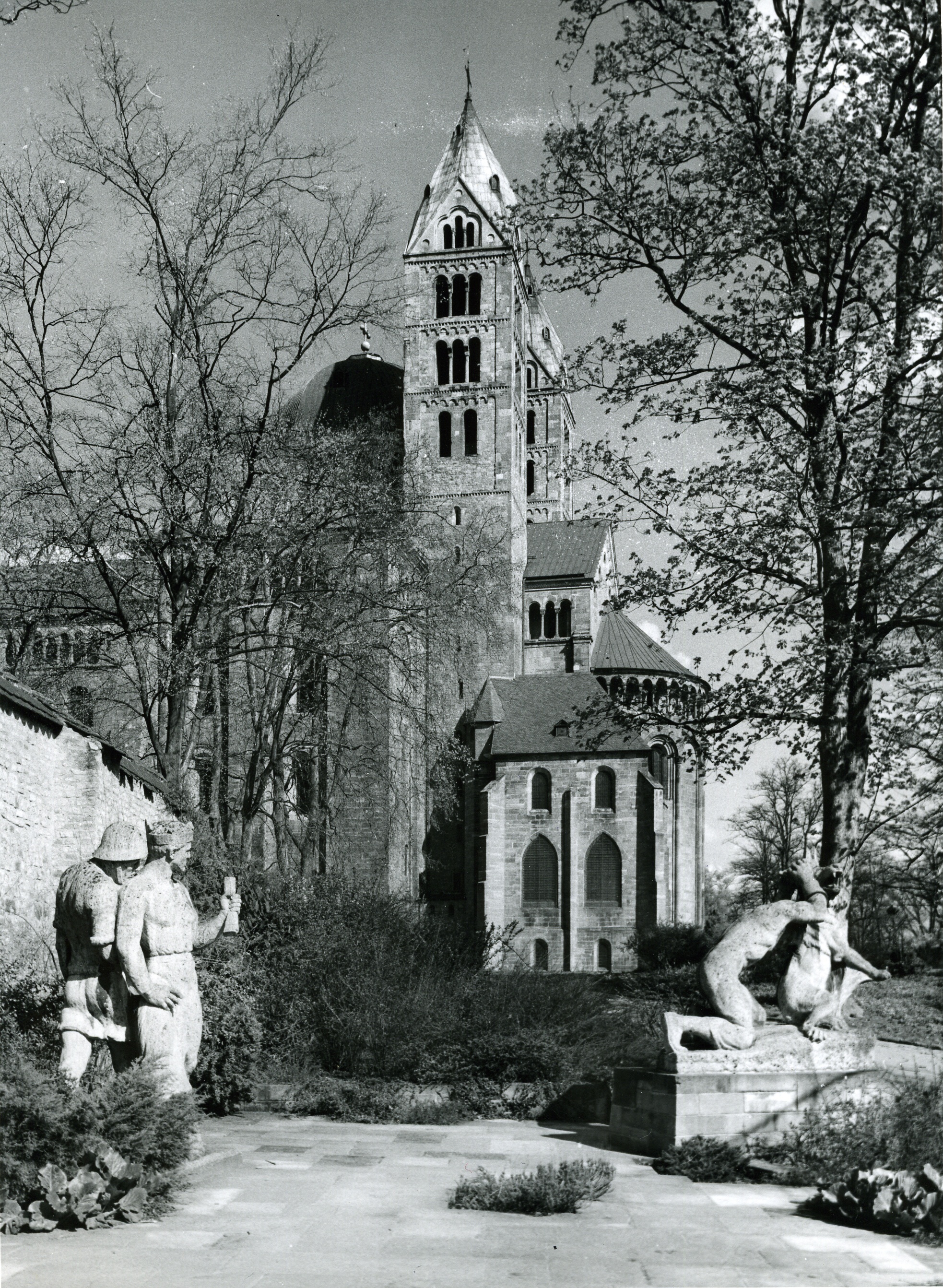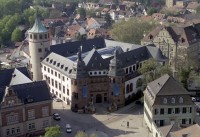The Salians were a medieval noble family that came from the area around Worms and Speyer. Between 1024 and 1125, four Roman-German kings and emperors emerged from this family: Konrad II, Heinrich III, Heinrich IV and Heinrich V. The Salian emperors had built the Romanesque cathedral in Speyer and chose it as their burial place.
Design/Execution: Ludwig Cauer, sculptor (1866 Bad Kreuznach – 1947 Bad Kreuznach)
Commissioned by: Dr. Wilhelm Frick, NS Reich Minister of the Interior (1877 Alsenz – 1946 Nuremberg)
Depiction: Figures of the Salian Emperor Konrad II with his wife Empress Gisela,
Emperor Heinrich III, Emperor Heinrich IV and Emperor Heinrich V., each with secondary figures
Date of origin: 1930-1940
Historical Context:
The sculptural group of Salian emperors with accompanying figures shown here was designed by the sculptor Ludwig Cauer starting in 1930 and completed in 1940 as a work commissioned by the NS Reich Minister of the Interior, Dr. Wilhelm Frick. Wilhelm Frick was significantly involved in the passing of the "Nuremberg Laws". These laws formed the basis for the discrimination against and persecution of the Jewish population. Wilhelm Frick was sentenced to death as a major war criminal by the International Military Tribunal in Nuremberg in 1946 and executed in that same year.
Ludwig Cauer came from a widespread family of sculptors. Until 1930 his sculptural work followed a historicist-classical style. With his last work – the group of Salian emperors – he increasingly embraced a National Socialist conception of art. Cauer was a member of the NSDAP and in 1944 was included in the list of the "Gottbegnadeten" ("the divinely gifted") published by the Reich Ministry for Popular Enlightenment and Propaganda under Joseph Goebbels.
In 1941, the group of figures was first exhibited at the Prussian Academy of Arts in Berlin and then brought to Speyer. As early as 1940, the Reich Minister of the Interior had assured the then Lord Mayor of Speyer that he would bequeath the sculptures to the city as a gift. The aim was to turn Speyer Cathedral into a National Socialist consecration site. The bishop and the cathedral chapter did not agree with the original plan to show the sculptures inside the cathedral and delayed the process. Therefore, the placing of the figures in the cathedral vestibule never happened during the Second World War.
Initially, during the years following WW II, the figures were forgotten. Until 1950, they remained packed in boxes and stored in the courtyard of the State Archives, where they were provisionally displayed from 1951 onwards. After extensive discussions among the public and in the city council, they were finally placed in the cathedral garden at their current location in 1964, also keeping in mind their potential to attract tourists. However, because of their Nazi era background, discussions about the statues’ artistic and cultural-political significance continue.
The City of Speyer 2022
en










